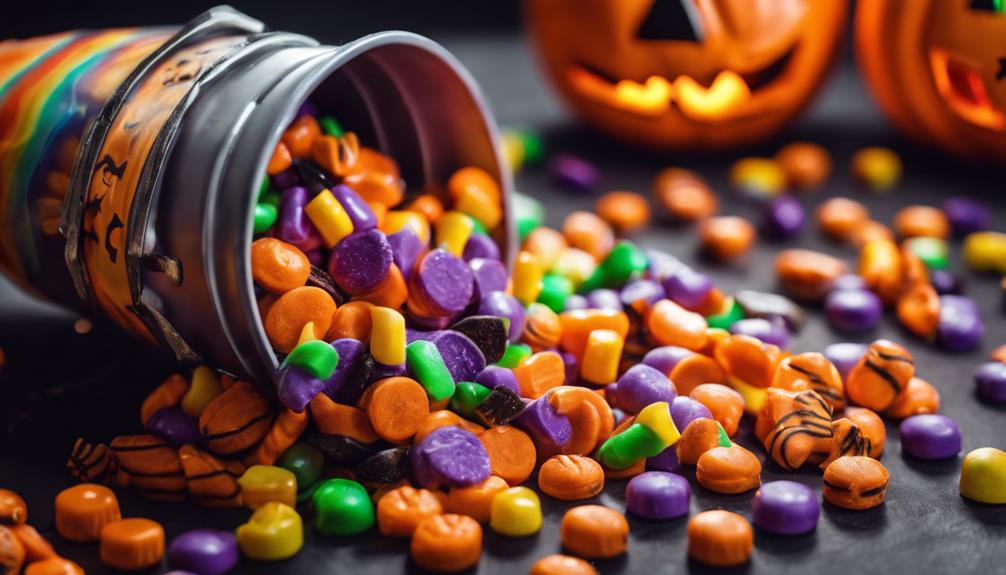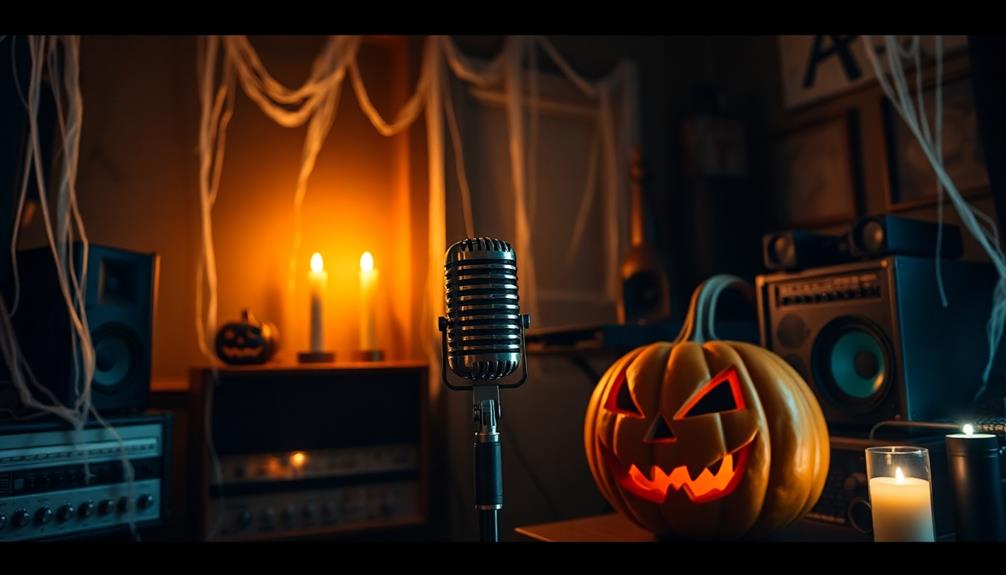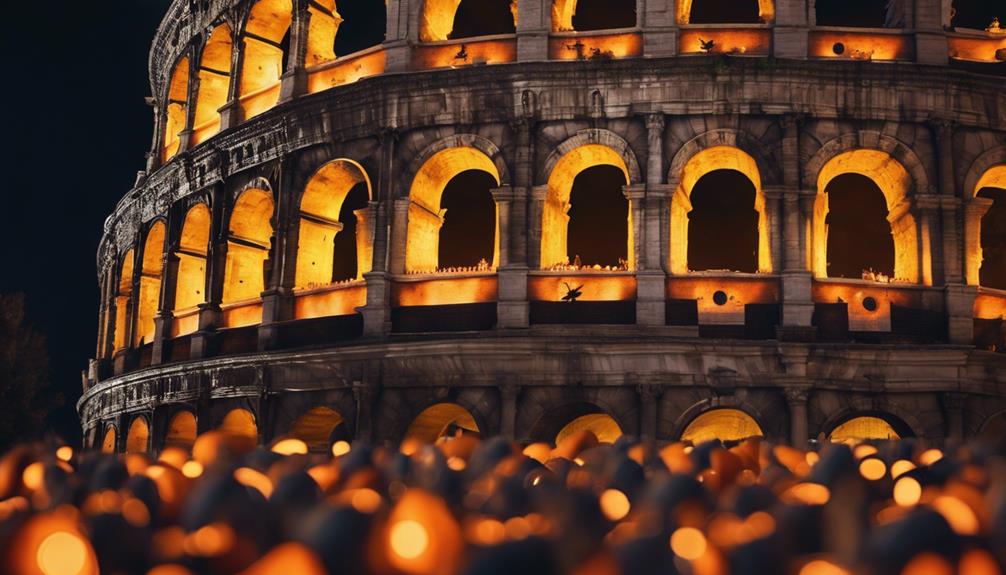To determine how much Halloween candy to buy, consider factors like the number of trick-or-treaters in your area, previous years' trends, and the type of treats you want to give. Estimate trick-or-treater numbers based on community size, group sizes, and local customs. Remember, urban areas may see more visitors than rural neighborhoods. Start with full-size bars, then switch to fun-size bars. Check the weather forecast for potential candy needs. Prepare individually wrapped candies for hygienic distribution. Seek budget-friendly options and plan for future candy needs by analyzing past trends. These tips make sure you have the right amount of candy to delight all trick-or-treaters.
Key Takeaways
- Consider past years' trick-or-treater numbers and candy consumption trends.
- Estimate visitor turnout based on neighborhood participation and local culture.
- Factor in candy preferences and distribution strategies for fair allocation.
- Adjust candy quantities based on weather forecast and potential fluctuations.
- Calculate budget-friendly candy purchases by setting a spending limit and exploring discounts.
Factors to Consider for Candy Quantity
To accurately estimate the amount of Halloween candy needed, consider the number of trick-or-treaters in your area. You want to make sure you have enough candy to delight all the ghosts and goblins knocking on your door. Think about how many children typically come by each year and adjust accordingly. When deciding how much Halloween candy to buy, it's important to factor in the bags of candy you plan to give each trick-or-treater. Some households opt for one small piece per child, while others are known for being more generous with handfuls of treats.
When preparing for Halloween, it's vital to take into account the type of candy you'll be offering. Some candies are more popular than others, so knowing your audience can help you choose the right mix. Additionally, consider your budget and how much you're willing to spend on Halloween treats. By planning ahead and considering these factors, you can make sure you have enough candy to make every trick-or-treater's night spooktacular.
Estimating Trick-or-Treater Numbers
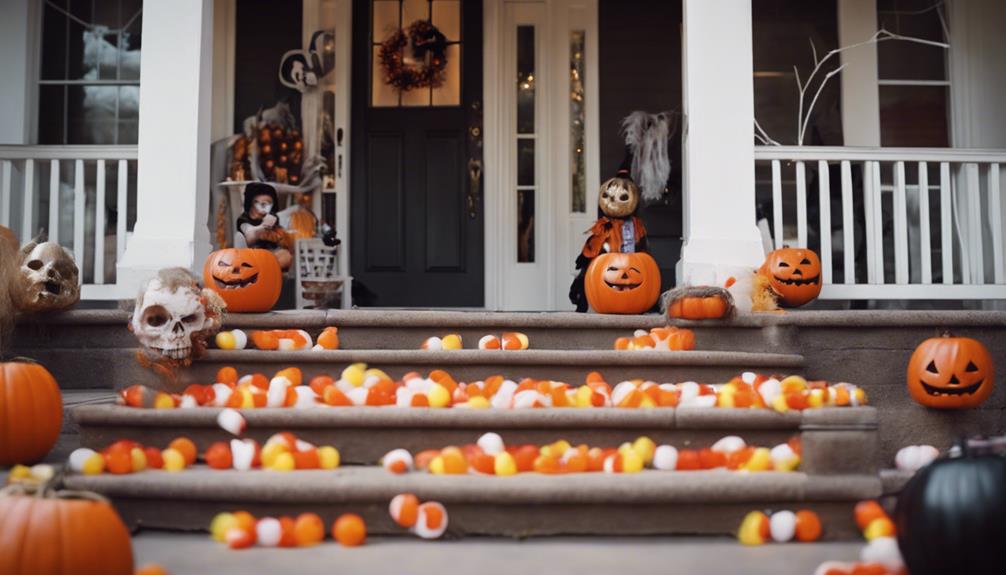
When estimating trick-or-treater numbers, consider various methods like neighborhood size, weather conditions, and day of the week, which can all affect the turnout.
The factors influencing the number of visitors can vary from year to year, making it crucial to plan ahead and have a flexible candy quantity strategy in place.
Trick-or-Treater Estimate Methods
Analyzing the number of trick-or-treaters in your area can be done by examining past years' trends and community participation levels. By observing Halloween festivities from previous years, you can gauge the typical trick-or-treater turnout and use this as a basis for your estimate.
Pay attention to group sizes and consider the level of community event participation to fine-tune your prediction. Engaging with neighbors and understanding the local trick-or-treating culture can also provide valuable insights into the expected numbers on Halloween night.
Additionally, assess whether your neighborhood is known as a Halloween hotspot that attracts children from surrounding areas, which could influence the volume of trick-or-treaters. Weather conditions on Halloween night may also impact the turnout, so it's important to factor in potential variations based on the forecast.
Factors Affecting Numbers
Understanding the various factors that influence trick-or-treater numbers is essential for making accurate estimates for Halloween candy purchases. By evaluating past trick-or-treater frequency in your area, you can gauge how many children might come knocking on your door.
Asking neighbors for insights can also be helpful in estimating the expected turnout. Additionally, analyzing the local trick-or-treating culture will give you clues about participation levels. Take into account community events and group sizes as well, as these can impact the number of trick-or-treaters you can expect.
Household size, trick-or-treater frequency, and local trick-or-treating culture all play a role in determining how much candy you might need. By estimating the number of trick-or-treaters based on historical data and neighborhood characteristics, you can better prepare for a successful Halloween night of handing out treats.
Planning Candy Quantity
To plan the quantity of candy needed for Halloween, assess past trick-or-treater numbers and community events. Consider how many children typically visit your house on Halloween night. Think about any local events or parades that might attract more kids to your neighborhood. Take into account the size of your neighborhood and its popularity on Halloween. Adjacent areas might bring in additional trick-or-treaters, impacting how much candy you need.
Decide on the serving size of candy you want to give each child. This choice can influence how much candy you should buy. Keep your budget and generosity in mind when determining the portion size.
Be prepared to adjust your candy stock based on weather conditions. Rain or cold weather could affect the number of trick-or-treaters out and about.
Impact of Neighborhood Type
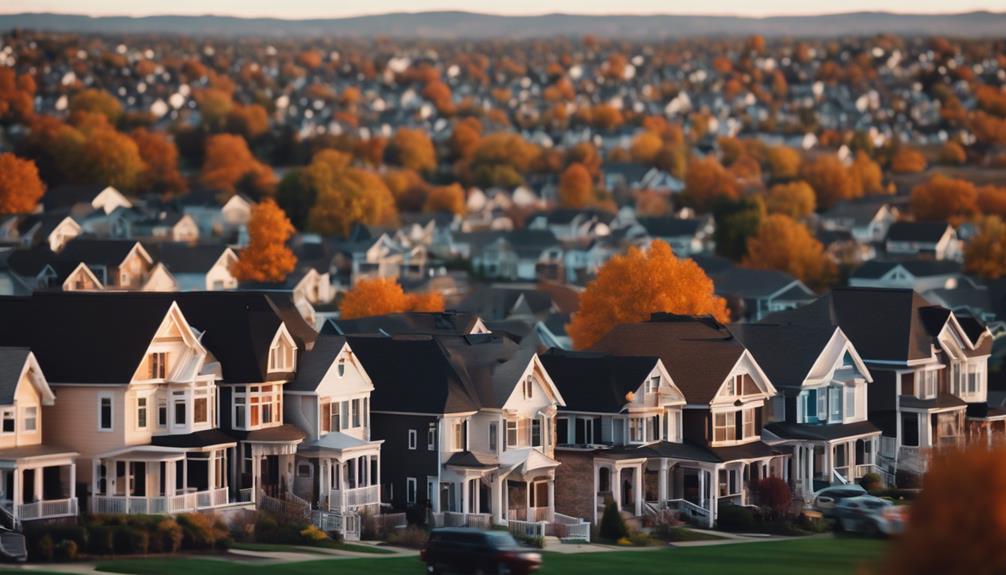
When considering the impact of neighborhood type on your Halloween candy supply, factors like urban versus rural settings, socioeconomic demographics, and safety concerns play an essential role.
Urban areas might attract more trick-or-treaters, requiring a larger candy stockpile, while rural neighborhoods could see fewer visitors. Understanding these distinctions can help you prepare adequately for the Halloween night influx.
Urban Vs. Rural
Taking into account the trick-or-treater density and visitor influx, the type of neighborhood, whether urban or rural, significantly impacts the amount of Halloween candy you should buy.
In urban areas, where there's a higher concentration of households and trick-or-treaters, you may find yourself needing to stock up on a significant amount of candy per household to cater to the increased demand. Urban neighborhoods often attract more visitors from surrounding areas, further adding to the candy requirements.
On the other hand, rural areas tend to have fewer trick-or-treaters and more spread-out houses, resulting in less candy needed overall. When preparing for Halloween, it's important to consider the specific characteristics of your neighborhood to make sure you have enough treats for all the excited trick-or-treaters.
Be mindful of the differences between urban and rural settings to estimate how much candy you should have on hand for a successful Halloween night.
Socioeconomic Factors
Neighborhood type not only influences the number of trick-or-treaters but also plays a role in how socioeconomic factors impact the demographics and behaviors of those participating in Halloween festivities. When it comes to the amount of candy you'll need for Halloween, consider the following:
- Bags: In neighborhoods with higher socioeconomic status, children might use larger bags or buckets to collect candy, meaning you may need more treats to go around.
- Fun Size Candies: In areas where families have more disposable income, kids might be used to receiving larger or more expensive treats, so having fun size candies mightn't be as appealing.
- Amount of Candy: Depending on the neighborhood's economic makeup, you may need to adjust the quantity of candy you purchase to cater to the preferences and expectations of the trick-or-treaters in that area.
Understanding these nuances can help you prepare adequately for Halloween night in your specific neighborhood.
Safety Concerns
In certain areas, the level of neighborhood safety directly influences the volume of trick-or-treaters that may visit your home on Halloween night. Neighborhood safety plays an important role in determining how many children will be out and about seeking treats. Factors like well-lit streets, known trick-or-treating routes, and overall safety concerns can impact the number of trick-or-treaters in your area. Safer neighborhoods tend to attract more families and children, increasing the demand for Halloween candy. Conversely, areas with safety issues may see fewer children participating in the tradition.
When considering how much Halloween candy to buy, take into account the safety of your neighborhood. If you live in a well-lit, secure area with known trick-or-treating paths, you might expect a higher turnout of enthusiastic trick-or-treaters. On the other hand, if safety concerns are prevalent in your area, you may anticipate a lower number of children knocking on your door for treats. Being aware of your neighborhood's safety level can help you estimate the quantity of candy needed to accommodate the trick-or-treaters who may visit.
Candy Preferences and Distribution

To effectively cater to trick-or-treaters' candy preferences and guarantee a fair distribution, plan to offer 2-3 fun size bars per visitor, adjusting as needed for early and late arrivals. Here are some tips to help you manage candy preferences and distribution efficiently:
- Start with full-size bars for the first few visitors to make a good impression.
- Shift to fun size bars as the night progresses to make sure you have enough for everyone.
- Consider preparing alternative treats like mini bags of pretzels and cheese puffs for those who may prefer savory snacks.
Weather's Influence on Candy Needs
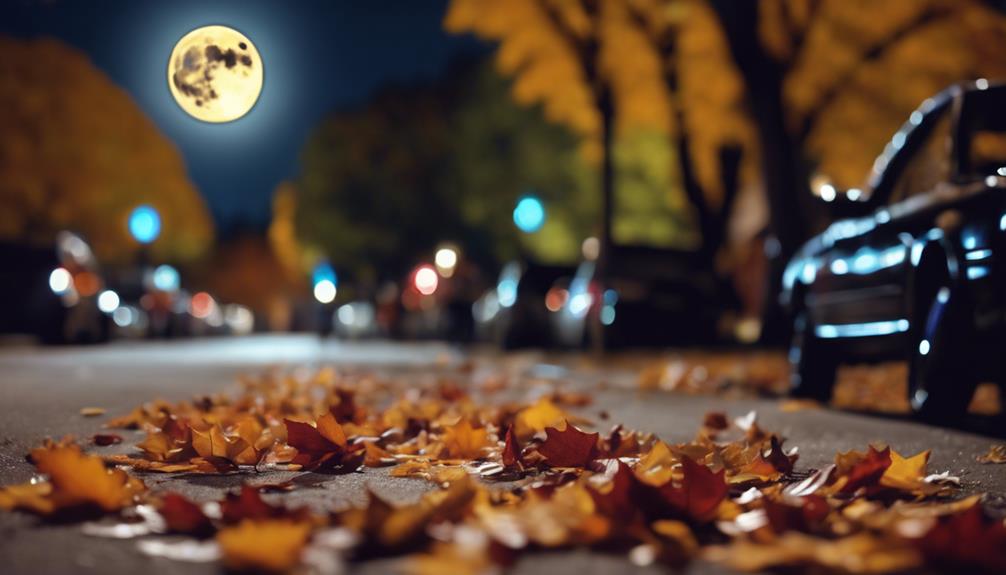
Prepare for potential fluctuations in trick-or-treater numbers due to weather conditions impacting the amount of candy needed. Cold or rainy weather may reduce the number of children out for trick-or-treating, affecting how many pieces of candy you'll require. Check the weather forecast for Halloween night and adjust your candy stock accordingly.
Be ready for variations in candy consumption based on weather conditions. Plan for potential changes in trick-or-treater turnout due to the weather. Adjust the quantity of candy you have on hand based on the expected weather conditions to make sure you have enough for all the trick-or-treaters.
Remember that the size of the candy can also impact how much you need. By considering these factors, you can make sure you have the right amount and size of candy this Halloween.
Timing and Availability for Candy Distribution
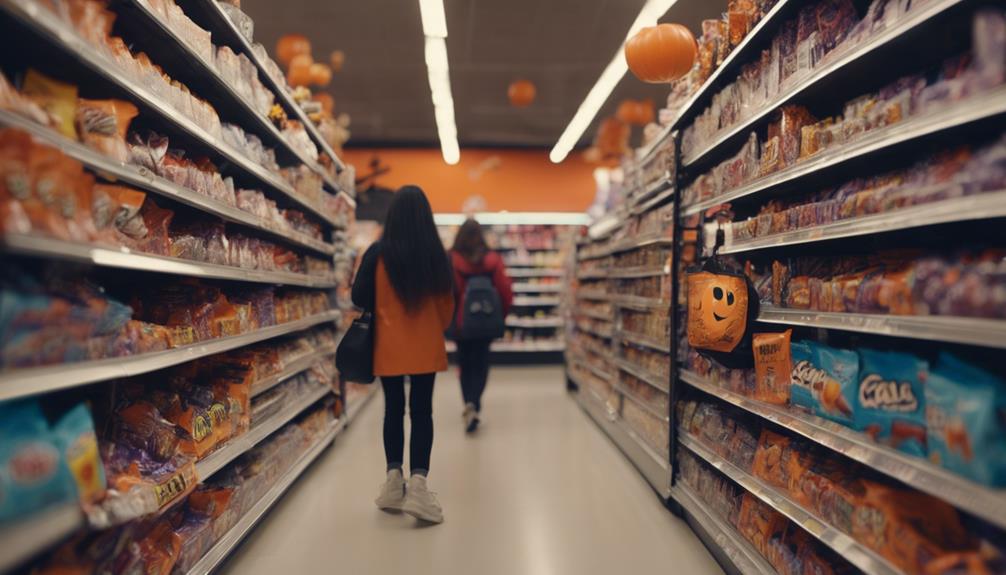
Consider strategizing the timing and availability of candy distribution to align with your Halloween plans and guarantee a successful trick-or-treating experience. When planning your candy distribution, keep the following points in mind:
- Buy Individual Pieces: Opt for candies that are individually wrapped to make distribution easier and more hygienic during trick-or-treating.
- Consider Small Bags: Preparing small bags of candy with a few pieces each can help control the amount given out and prevent running out too quickly.
- Include Candy Bars: Mixing in popular candy bars among the assortment of treats can add excitement and variety to the distribution, making it more appealing to trick-or-treaters.
Budget-Friendly Candy Buying Tips
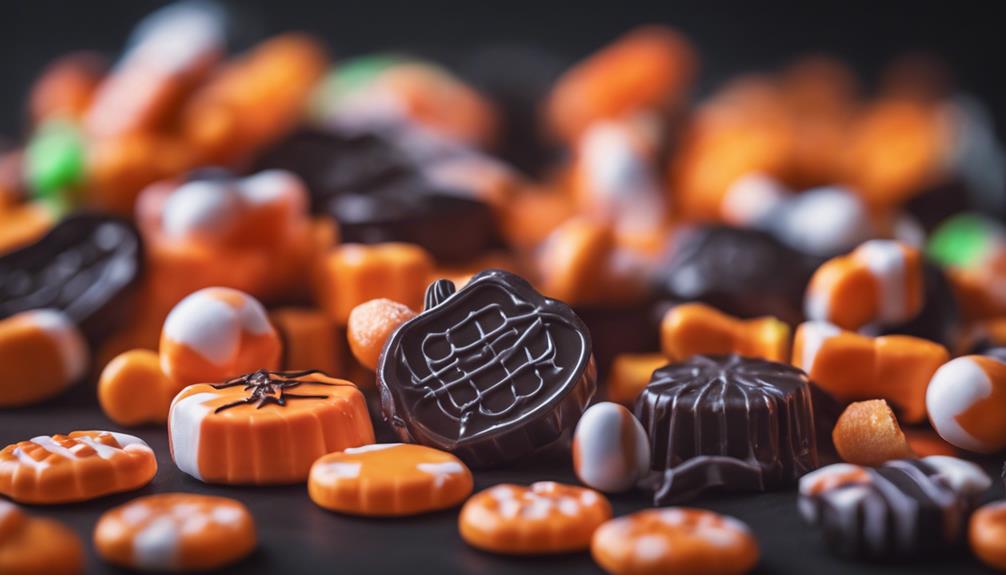
Save money on Halloween candy purchases by looking for sales, discounts, and bulk buying opportunities. When determining the candy you'll need, consider the number of trick-or-treaters in your area and how much you typically give out per visit.
To make sure you stay within your budget, divide the total amount you want to spend by the cost per piece of candy. This calculation will help you estimate the quantity you can afford.
Additionally, keep an eye out for special promotions at local stores or online retailers. Buying in bulk is another cost-effective strategy, as larger quantities often come with discounted prices. Don't forget to explore non-traditional candy options that may be more budget-friendly while still being enjoyable for kids.
Utilize coupons or rewards programs when purchasing Halloween candy to save even more. Implementing money-saving strategies like setting a budget for candy purchases will guarantee you don't overspend while still delighting trick-or-treaters.
Planning for Next Year's Candy Needs
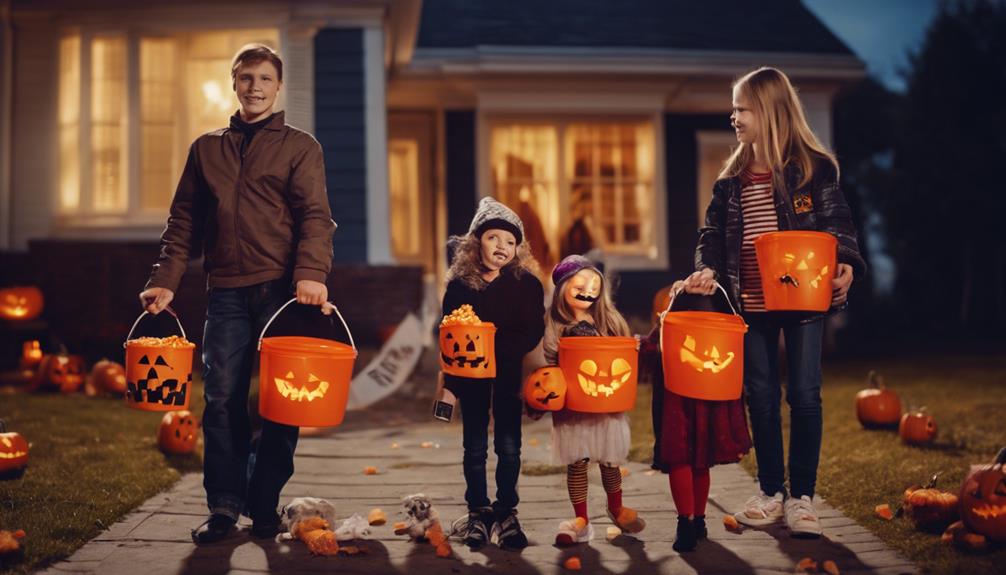
To effectively plan for next year's candy needs, assess the expected number of trick-or-treaters based on past participation and neighborhood trends. This will help you in figuring out how much candy you need to purchase for Halloween night.
Consider the following points:
- Review Past Participation: Look back at the number of trick-or-treaters you had in previous years to anticipate future needs accurately.
- Analyze Neighborhood Trends: Take into account any changes in your neighborhood demographics or community events that may impact the turnout of trick-or-treaters.
- Factor in Weather Conditions: Be prepared for variations in weather conditions and how they might affect the number of trick-or-treaters on Halloween night.
Frequently Asked Questions
How Much Candy Should I Get on Halloween?
When determining how much candy to get on Halloween, consider factors like neighborhood size and how many trick-or-treaters you expect. Plan for each visitor to consume around 2 ounces of candy.
If you're aiming for cost-effectiveness, buying in bulk is a smart move. On average, a trick-or-treater visits 10 homes and consumes about 1.2 pounds of candy.
Keep these numbers in mind to guarantee you have enough treats for everyone!
How Much Does the Average Person Spend on Halloween Candy?
You spend around $40 on Halloween candy for 50 trick-or-treaters. It's recommended to allocate 2 ounces per trick-or-treater.
On average, a trick-or-treater consumes 1.2 pounds of candy. Bulk buying can help manage costs effectively. Consider your neighborhood size, decorations, and intentions when deciding how much candy to buy.
Balancing cost and quantity is key for a fun Halloween night.
How Many Pieces of Candy to Give a Trick-Or Treater?
When deciding how many pieces of candy to give a trick-or-treater, aim for 2-3 fun size bars per visitor. Some start with full-size bars for the first few and switch to fun size later.
Consider offering alternative treats like mini bags of pretzels alongside candies. Goodie bags with a mix of candies and small toys can be prepared in advance to guarantee enough treats for all.
Stock up on around 15,000 candies for the season and adjust as needed.
What Is the Average Amount of Trick or Treaters?
On average, Halloween night sees about 50 trick-or-treaters visiting homes. Each trick-or-treater typically stops by around 10 houses during their rounds. Budgeting for approximately 2 ounces of candy per visitor is recommended.
An average trick-or-treater consumes about 1.2 pounds of candy on Halloween, according to a Mayo Clinic study. Spending around $40 on candy for 50 trick-or-treaters is a common suggestion.
Conclusion
So, as you gear up for Halloween night, keep in mind that the key to a successful candy-buying strategy is to take all the factors at play into account.
From estimating the number of trick-or-treaters to considering neighborhood type and candy preferences, every detail matters.
Just like a well-planned costume can make you stand out in a sea of ghosts and goblins, a well-planned candy supply can make you the hero of the neighborhood on Halloween night.
Happy trick-or-treating!
